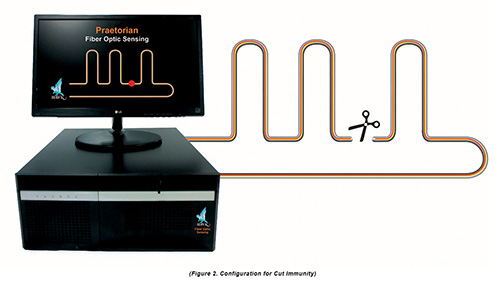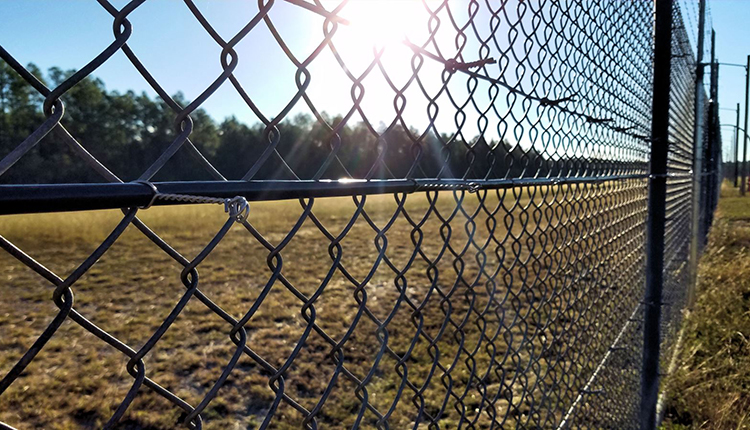Improve Your Safety With Advanced Fiber Optic Safety Equipments
In an era where safety is extremely important, advanced fiber optic security systems present an engaging remedy for boosting safety and security throughout different atmospheres. What ramifications do these improvements hold for future safety procedures?
Benefits of Fiber Optic Safety And Security
Utilizing the advantages of fiber optic technology significantly boosts protection systems throughout different applications. One of the primary benefits is the raised data transfer ability, permitting for the transmission of big amounts of data at high speeds. This is particularly critical for real-time video surveillance, where high-resolution feeds can be sent out without latency, ensuring instant reaction abilities.
Additionally, optical fiber show remarkable resistance to electromagnetic disturbance, which is crucial in atmospheres with potential signal disturbances. This integrity makes certain regular efficiency in important safety and security procedures. Furthermore, fiber optic wires are less vulnerable to touching and unauthorized access compared to conventional copper electrical wiring, therefore boosting data stability and confidentiality.
One more notable advantage is the resilience of fiber optic systems; they are extra resistant to environmental variables such as moisture, temperature variations, and harsh substances. This durability converts to lower maintenance expenses and longer life-spans for safety and security installments.
Lastly, the lightweight nature of fiber optic cords promotes easier setup and transmitting, specifically in complex infrastructures (fiber optic security system). Eventually, the combination of fiber optic modern technology right into security systems not only reinforces security procedures yet also optimizes operational effectiveness
Secret Attributes to Take Into Consideration
When evaluating fiber optic security systems, several essential features should be thought about to make sure ideal efficiency and efficiency. Initially, examine the system's detection variety and level of sensitivity; a considerable array permits checking huge locations, while high level of sensitivity makes sure that also small disruptions are found without delay.
Following, think about the combination capabilities of the system. A fiber optic protection system must perfectly interface with existing security actions such as video cameras and alarm systems, creating a natural safety network.
Toughness and environmental resistance are additionally important features. Make certain that the system is developed to withstand rough weather problems and potential physical hazards, as this will lengthen its operational life-span.

Lastly, check out the scalability of the system. A robust fiber optic protection system must be easily expanding to accommodate future demands without considerable overhauls. By carefully taking into consideration these features, you can pick a fiber optic safety and security solution that improves safety and security and safety in your environment.
Setup Refine Summary
To efficiently execute a fiber optic protection system, a methodical installment process is crucial. This process starts with an extensive website assessment to identify the details safety and security requirements and to identify ideal areas for fiber optic cables and safety and security tools. Following this analysis, the installation team will certainly create a comprehensive strategy, consisting of cable pathways, needed tools, and compliance with regional guidelines.
Following, the installation involves laying the fiber optic cable televisions, guaranteeing they are protected from environmental aspects and physical damages. Correct handling techniques are vital, as fiber optic wires are delicate and can be easily damaged. After the cabling is set up, adapters and terminations are thoroughly finished to ensure signal integrity.
The subsequent phase includes installing security devices such as video cameras, movement detectors, and alarm systems, all integrated with the fiber optic network. Strenuous screening is conducted to verify that all parts are working correctly and to ensure optimum efficiency.

Contrasting Fiber Optic to Standard Equipments
The advancement of protection technology has actually caused considerable developments in the comparison in between fiber optic systems and typical copper-based systems. Fiber optic systems use light to transfer information, supplying remarkable transmission capacity and speed contrasted to their copper equivalents. This results in the original source boosted information transmission capabilities, making optical fiber suitable for high-resolution video surveillance and real-time surveillance.
Furthermore, fiber optic cables are immune to electromagnetic disturbance, minimizing the likelihood of signal destruction triggered by external aspects. This characteristic makes certain constant efficiency, even in tough atmospheres. On the other hand, standard copper systems are more prone to interference, causing potential susceptabilities in safety and security applications.
Durability is an additional advantage of fiber optic systems. They are much less susceptible to harm from environmental factors such as dampness and temperature fluctuations, which can endanger copper wiring. Fiber optics are lighter and thinner, allowing for much easier installation and minimized physical impact.
However, standard systems tend to have reduced initial prices, making them appealing browse around here for budget-conscious projects. While fiber optic systems might need a greater ahead of time investment, their lasting benefits-- such as lower maintenance costs and higher reliability-- frequently outweigh the first expenditure, positioning them as a premium option for modern safety requirements.
Future Fads in Safety And Security Modern Technology
Emerging fads in safety and security modern technology are poised to transform the landscape of monitoring and hazard detection - fiber optic security system. As organizations significantly deal with sophisticated dangers, developments such as expert system (AI) and machine knowing (ML) are ending up being essential to safety and security systems. These modern technologies boost the capability of fiber optic systems by allowing real-time information evaluation, identifying anomalies, and automating actions to prospective violations
Furthermore, the assimilation of the Internet of Things (IoT) is reinventing protection structures. IoT tools can give comprehensive situational awareness and assist in seamless communication between different security components. This interconnectedness permits extra efficient monitoring and faster occurrence feedback times.
Biometric verification is likewise gaining energy, offering a higher degree of safety and security through special physical characteristics. As this modern technology progresses, it is likely to be included into fiber optic systems for boosted gain access to control.
Conclusion
To conclude, advanced fiber optic protection systems represent a significant improvement in safety and security technology. Their premium data transfer, resistance to disturbance, and toughness facilitate trustworthy monitoring and information integrity. As these systems integrate AI and IoT capacities, they enhance the general security framework, making certain robust security for properties. The webpage transition from standard systems to fiber optic solutions shows an expanding fad towards extra efficient and efficient protection measures in a progressively complex technological landscape.
Comments on “A Comprehensive Guide to Fiber Optics Infrastructure for Security Installations”